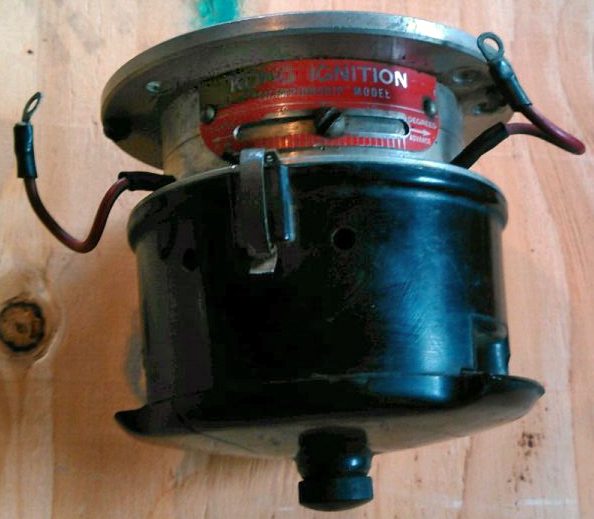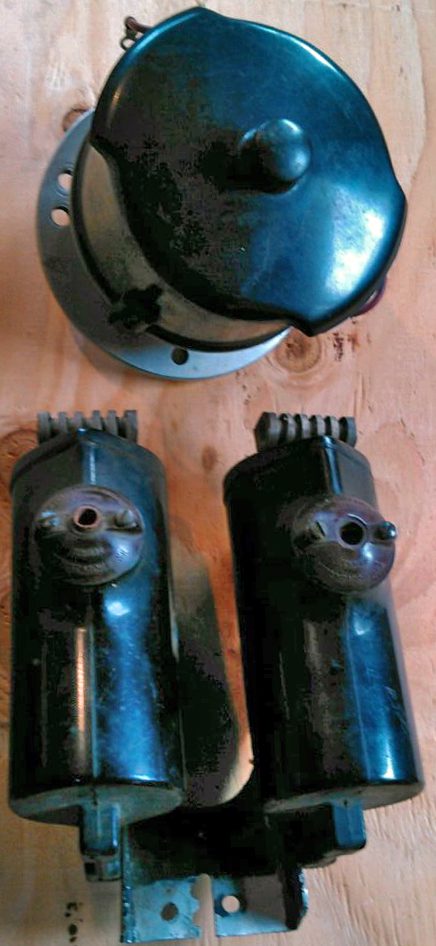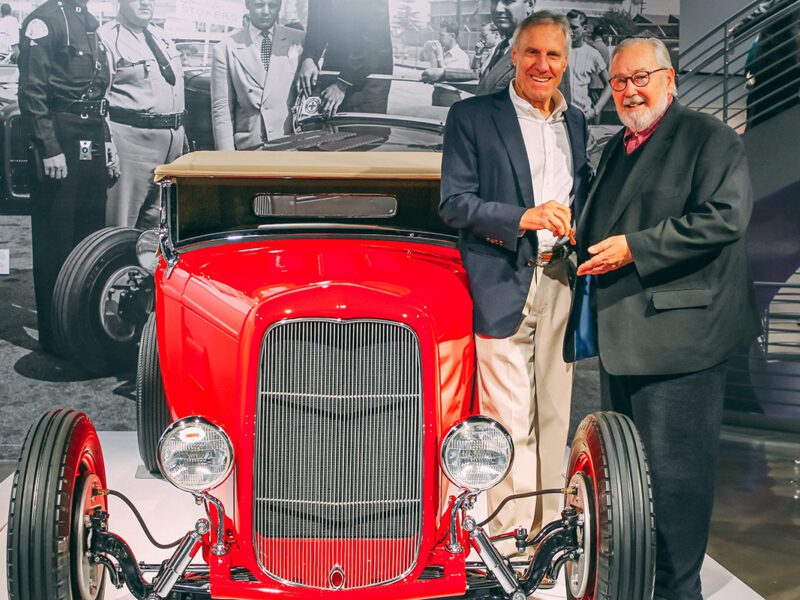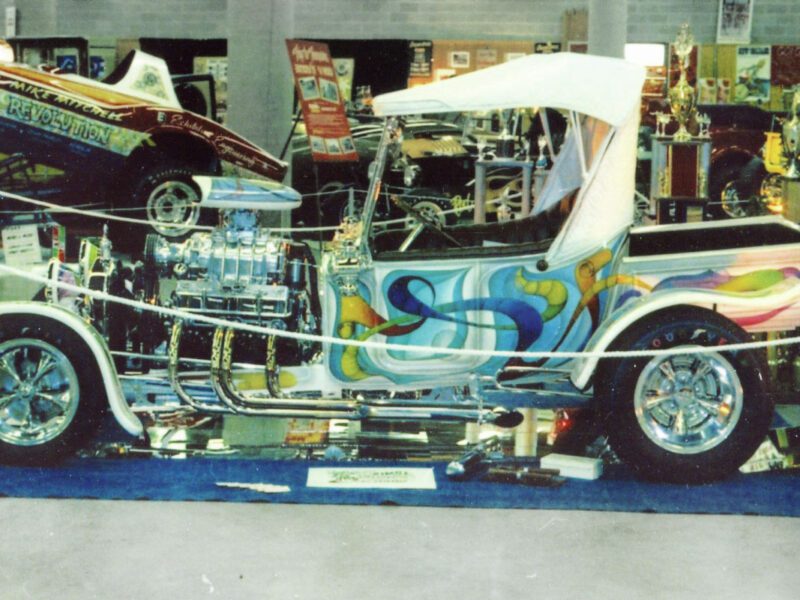“Kong” Jackson – The King of Early Flathead Ignitions
This column frequently focuses on the personalities who set in motion the post-World War II hot rod movement – those heroic G.I.s who returned stateside yearning to unleash their pent-up need for speed. But a handful of SoCal racers were skimming over the arid lakebeds of the Mohave Desert before the war, during the 1930s, testing the limits of available hot-rod tech. Such luminaries included Ed Iskendarian, Veda Orr, and Ed Winfield, and others, many profiled on Fuel Curve in the past.
Another member of this fraternity was Charles “Kong” Jackson, who was a prominent, if unsung, lakes racer before Pearl Harbor and who became an even more prominent speed-parts trailblazer afterwards.
Jackson’s interest in lakes racing dates to the late-1930s. During this period, it was an unregulated affair. In Tex Smith’s Hot Rod History book, author Tom Medley quoted Jackson as saying, “Before the Road Runners, Ninety Mile an Hour, Sidewinders, and Throttlers formed the SCTA in 1938, guys were getting killed at the lakes, running into each other. No organization. No nuthin’.”
“Before the Road Runners, Ninety Mile an Hour, Sidewinders, and Throttlers formed the SCTA in 1938, guys were getting killed at the lakes, running into each other. No organization. No nuthin’.”
With the war still a few years off, Jackson joined the Army as an Air Force mechanic and was stationed, coincidentally, at Mohave, adjacent to Muroc and Rosamond dry lakes. During his off-hours, Jackson first came up with the idea of improving ignitions for Ford Flathead V8s.
By 1938, Jackson had returned to civilian life – and racing at the lakes, campaigning a hotted-up ’32 Ford highboy. Kong may have traded his khaki uniform for khaki chinos, but the Army was preparing for the upcoming worldwide hostilities. This made for some unusual confrontations at the lakes.
At a Muroc meet in 1941, the racing was interrupted when a bevy of military Jeeps descended on the paddock. And then, well, let’s let Jackson describe the scene:
“We saw ’em coming and we knew what they were there for because the U.S. Army Air Corp was southwest of where we were running, and all our dust was blowing over their camp. We were working on our cars when here came a Jeep and out jumped these guys with bayonets. Man, we just split!”
The irony of the scene, Kong later told Medley, was that in two months, after Japan’s attack on Hawaii, 90-percent of those men racing that day were in the service. It would be five long years before they returned.
 Ford introduced the Flathead V8 in 1932, and early on it became obvious that one of the engine’s weaknesses as a performance powerplant was its the ignition. The goal was to modify the stock ignition for more dwell and adding more potent coils, or adapting magnetos or distributors from other makes of V8s. A popular trick was to use a housing that mounted two four-cylinder magnetos.
Ford introduced the Flathead V8 in 1932, and early on it became obvious that one of the engine’s weaknesses as a performance powerplant was its the ignition. The goal was to modify the stock ignition for more dwell and adding more potent coils, or adapting magnetos or distributors from other makes of V8s. A popular trick was to use a housing that mounted two four-cylinder magnetos.
After the war Kong set up a speed parts business that focused on improving the woeful flatty distributor. His new ignition used dual high-speed points and precision four-lobe breaker cams – a cam ground by the legendary bumpstick sculptor Ed Winfield.
The Kong ignition also utilized a cable control that allowed the driver to advance or retard the timing from the driver’s seat. Renowned mechanic Clay Smith (he of cigar-chomping woodpecker logo fame) used this feature successfully as head mechanic for the factory Lincoln team in the 1953 Mexican Road Race, a course with dramatic changes in elevation. The team swept the first four places.
For more insight on Kong, we checked in with our unofficial Legends of Hot Rodding historical consultant Alex Xydias, who was a close friend of Jackson. “Kong was a really, really smart guy, who was president of the Sidewinders car club and timer at the lakes,” Xydias explained. “His ignitions were very innovative, and that’s why I sold them at So-Cal Speed Shop. Think we charged 49 bucks. They were also a key to the success of all our race cars.”
Xydias was so impressed with Kong ignitions that he purchased the entire business when Jackson was recalled into the service during the Korean War (although he ended up in Italy). Sadly, the days of Flathead superiority were short-lived, as the emergence of overhead-valve V8s, particularly the small-block Chevrolet, eventually torpedoed the Flathead speed parts business, including Kong ignitions.
Throughout his life, Kong continued to develop speed parts and attend the lakes and Bonneville. When the Flathead revival fired up, Kong was revived, as well, offering aluminum heads and intakes manifolds for retro races committed to the Flathead.
At the conclusion of Medley’s interview with Jackson in 1988, Kong mused, “When you start thinking about all the wild things we did in those days, you kind of wonder how we ever made it. I’m still as crazy as ever about Flatheads. So, I guess you never outlive your love for hot ross, not matter how old you get.”
Kong Jackson was a fixture at El Mirage until his death in 2002. The early days of hot rodding is dotted with colorful characters essential to the industry we know today. Charles Kong Jackson was a powerful spark among them.





